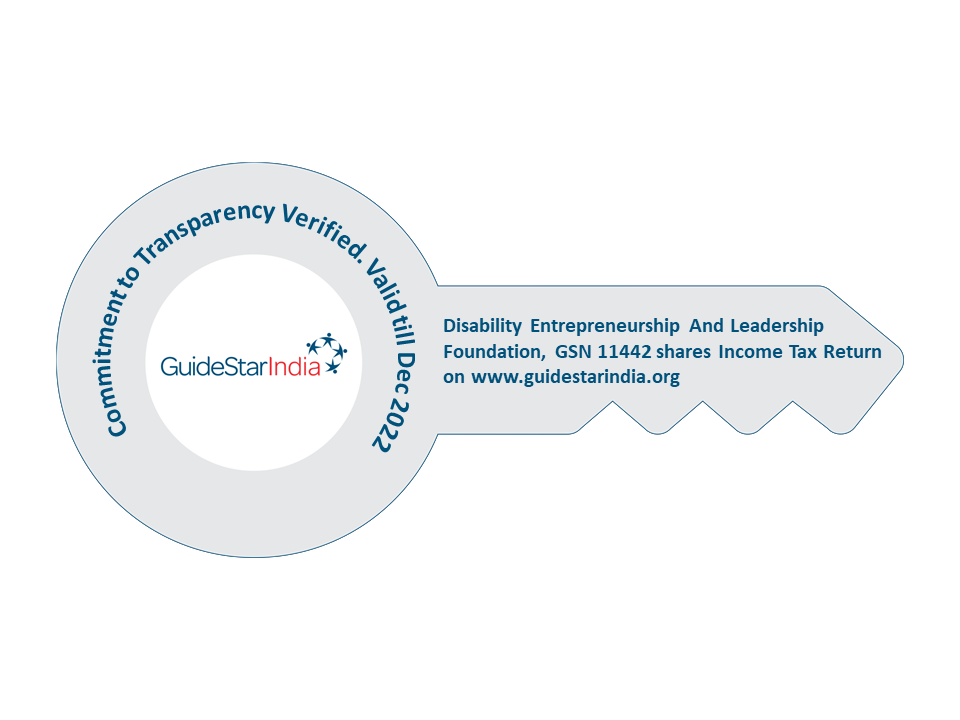Education has proven to be one of the most essential aspects to sustaining livelihood. For well-educated ones, opportunities for employment, entrepreneurship etc. is highly available.
This also holds good for children with a disability.
But unfortunately in the society today, as disability is seen as a problem most children are deprived of education which leaves them unemployed and are hence categorised as vulnerable citizens. This needs to be instigated and children with disabilities need to be provided with equal opportunities to education like any other child.
While we emphasize on the importance of education, we also need to bear in mind somethings that could help children feel comfortable and avoid school dropouts among children with disabilities.
1. Do create a welcoming atmosphere in the class room. Every one of us has an urge to feel welcome where ever we go. This removes embarrassment and creates a better atmosphere. But in most case children with disabilities feel unwelcome and hence feel that they need to work towards being welcome. This causes stress not only on the child, but also on the family of the child. More often than not it is seen that it is the adults who feel hesitant to welcome children with disabilities rather than other students. Hence it is the duty of the teacher to create a welcoming environment within the classroom. This would help create a new generation of people that accept students with disabilities as their friends. To create this environment the teacher must welcome the student with a disability just as she/he would with any other student, the teacher must be sure that all students feel important within the classroom.
2. Ensure not to be just a host. Many students with disabilities may have special teachers to help them in their education so as to not leave them behind in their work. But this does not mean that the class teacher is not responsible for the child, but the teacher’s responsibility to ensure that the student is learning. Acting just as a host does not help at all. The class teacher should be someone every child with or without a disability needs to look up to for learning. And a teacher needs to develop an understanding that if he/she is capable of teaching students with disabilities it is not difficult to teach a child having a disability.
3. Encourage peer integration: With passing time, it is seen that more and more children with disabilities are placed in inclusive schools but still are not being included. Most times students having a disability are not included particularly when it comes to group work and pier interaction. So much so that most students are placed on separate larger desks with their learning support assistant, hence missing out on most peer-to-peer learning. This is the opposite of inclusion and may lead to social isolation. As much as possible the student with a disability should be able to participate in the same activities as his peers.
4. Don’t use a single teaching style at all times: As every individual is different but is unique in their own way, it is important to adapt different teaching styles depending on a child as one teaching style may not be applicable to all. It has also been observed that passive teaching style does not tend to reach many children hence active teaching methods needs to be used so as to get children to learn at schools. Children with disabilities tend to learn much better when using more active, participatory and creative modes of learning. Activity based learning is not only beneficial to the student with a disability but it is also preferred and more effective with students that do not have a disability. This method of teaching and learning tends to promote positive behaviour and motivation.
5. It is important for a teacher to adapt instruction style of teaching especially when there are students with disabilities in a class room. This aids in better access to learning. Adapting instructions such as.
1. Allowing different modes of response when a disability makes it difficult to talk or write.
2. Making the activities given in class shorter or longer depending on the disability of the child.
3. Altering the amount of tasks given based on the ability of the student.
4. Extending waiting time.
5. Help by providing memory aids.
6. Identifying the interests of a student and using it to the advantage of the learning of the child.
7. Using multimedia if necessary.
(Source: sullivanphilippa3.wixsite.com)
Disability Entrepreneurship And Leadership (DEAL) Foundation actively works across the districts of Gadag and Bengaluru to promote sustainable livelihood opportunities for persons with disabilities.
As education is the most important aspect that leads to sustainability, we work with schools to encourage and promote inclusive education so as to help children with disabilities acquire proper education that would enable them further to achieve sustainability.
For further questions regarding the blog, please write to us at info@deal-foundation.com.
And to know more about the work we do, please log on to www.deal-foundation.com.


 Awarded by Guidestar India
Awarded by Guidestar India